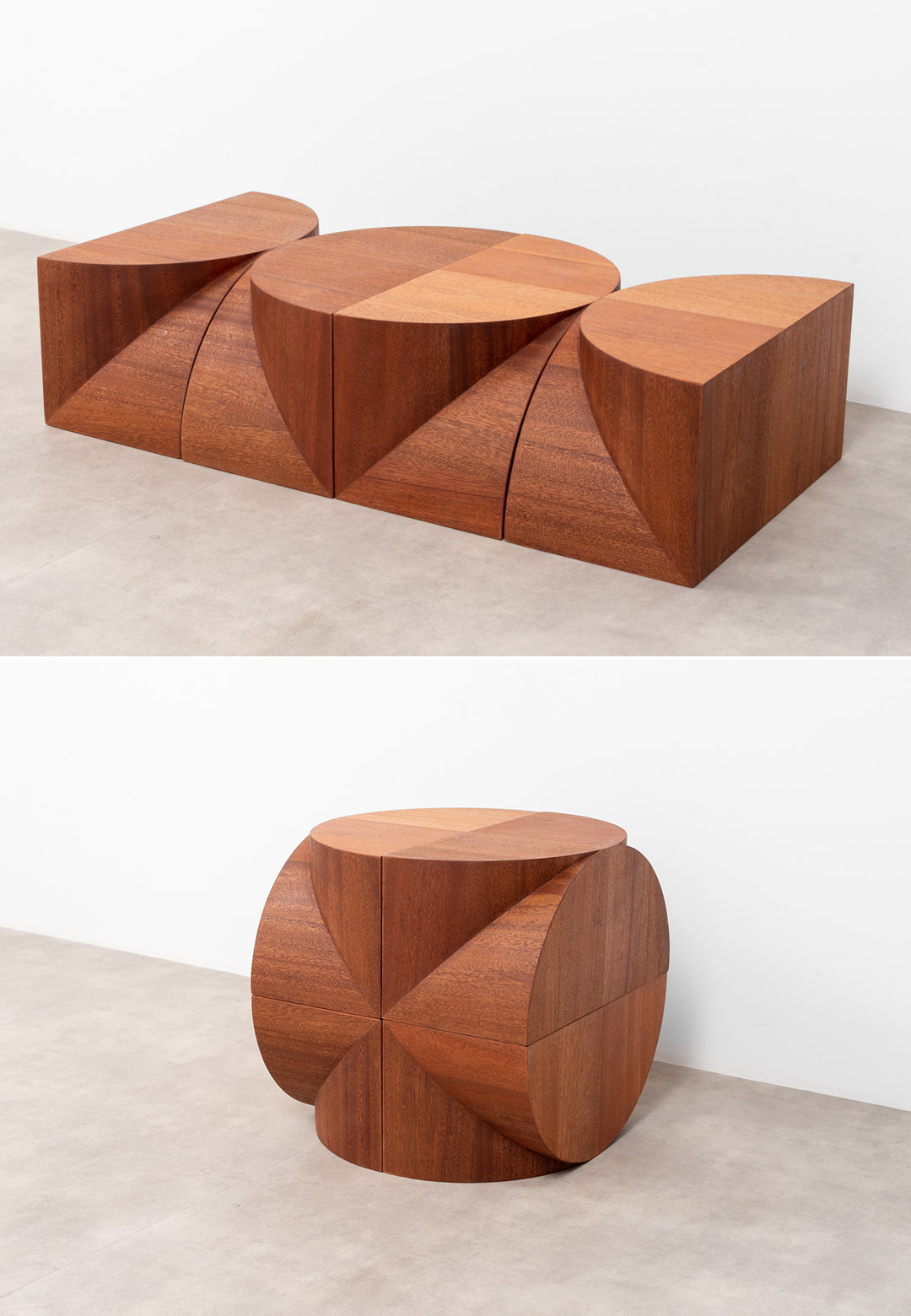Eindhoven-based designer Rino Claessens’ work typically explores modularity in furniture designs. Adaptation and flexibility are key principles that have guided his previous work with ceramics, which he mentions is the primary material he works with. This fascination with simple forms and the variability of modular designs is highlighted by his latest collection of eight artefacts crafted in mahogany wood, that can be stacked and arranged in diverse forms, thus creating a range of different coffee tables and side tables.
The modular furniture collection was designed by Claessens for Paris-based art gallery, Galerie Scene Ouverte. As Claessens tells STIR about his thought process for the pieces, “I was interested in the idea of an object that isn’t static but can be rearranged into multiple forms. Working on a modular system before inspired me to apply it in a new way.” Apart from the simplicity of the forms that bring to mind a half cylinder bent at right angles, the dynamism afforded to the designs by how each piece perfectly fits into the other is worth noting.
Each piece can be composed in at least 10 different combinations, from serving as a coffee table or even a side table, based on the requirements of its users. Talking about the modules, Claessens says, “The modules are a variation on a cylinder. Initially, I made mockups on a 1:5 scale to see the proportions of the volumes and explore the potential combinations that could be formed.” Because of the minimal design of the modules, each variation is also distinctly different from the other.
For instance, a larger table design may be achieved by stacking the eight half cylinders in a manner that they resemble three complete cylinders, with two vertical volumes intersecting the third. Similarly, these may be separated into groups of four modules each to make two side tables. Another combination of the same modules could also result in a large rectangular table with three legs, or a smaller one with a surface of two half circles. The possibilities of creation with the modules are almost endless, like playing with LEGO pieces. Using flexible modules such as the ones designed by Claessens also addresses the issue of space, and affords a degree of variability and multifunctionality to any space.
Such ingenuity is particularly significant since it not only saves space but can also be a cost-efficient solution. While Claessens’ work normally uses ceramic as a medium, the finely carved modules of his Stacked Formations collection allow the designer to explore form, materiality, and composition through a novel approach to modular design.






 Sign in with email
Sign in with email










What do you think?